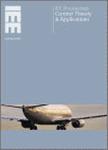版权所有:内蒙古大学图书馆 技术提供:维普资讯• 智图
内蒙古自治区呼和浩特市赛罕区大学西街235号 邮编: 010021

作者机构:Continental AG Strateg Technol Dept D-30419 Hannover Germany Ruhr Univ Bochum Dept Elect Elect & Informat Sci Control Engn Lab D-44780 Bochum Germany
出 版 物:《IEE PROCEEDINGS-CONTROL THEORY AND APPLICATIONS》 (IEE Proc Control Theory Appl)
年 卷 期:2001年第148卷第2期
页 面:137-145页
核心收录:
主 题:adaptive filtering problem first-order bias-corrected filter recursive estimation Simulation, modelling and identification truncated second-order filter recursive parameter estimation state-space methods continuous-discrete nonlinear filter nonlinear control systems Nonlinear control systems Kalman filters recursive prediction error method approximate nonlinear filters modified Gaussian second-order filter Other topics in statistics Control system analysis and synthesis methods flow control matrix differential calculus nonlinear filters laboratory three-tank process extended Kalman filter nonlinear state-space models Level, flow and volume control Signal processing theory sensitivity models
摘 要:If a recursive prediction error method is applied for the parameter estimation of state-space models, a filter must be used as the predictor, resulting in an adaptive filtering problem. Whereas for linear systems the optimal linear filter, the Kalman filter, can be used, approximate nonlinear filters have to be employed for nonlinear systems. For the parameter estimation, the gradient of the prediction error, and maybe the gradient of its covariance matrix as well, are required. These can be obtained from a sensitivity model;however, the derivation of such a sensitivity model is tedious and has only been done for the extended Kalman filter. Sensitivity models for four common continuous-discrete nonlinear filters are derived: the extended Kalman filter, the first-order bias-corrected filter, the truncated second-order filter, and the modified Gaussian second-order filter. The derivation of these sensitivity models relies heavily on the use of matrix differential calculus, and utilises a reformulation of the approximate nonlinear filters derived earlier. Elementwise derivatives and bookkeeping over indices are thus entirely avoided. An adaptive filter is applied for real-time parameter identification and tracking for a laboratory three-tank process.